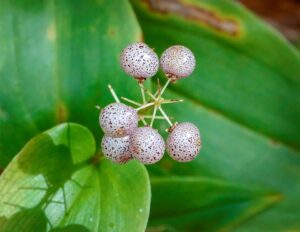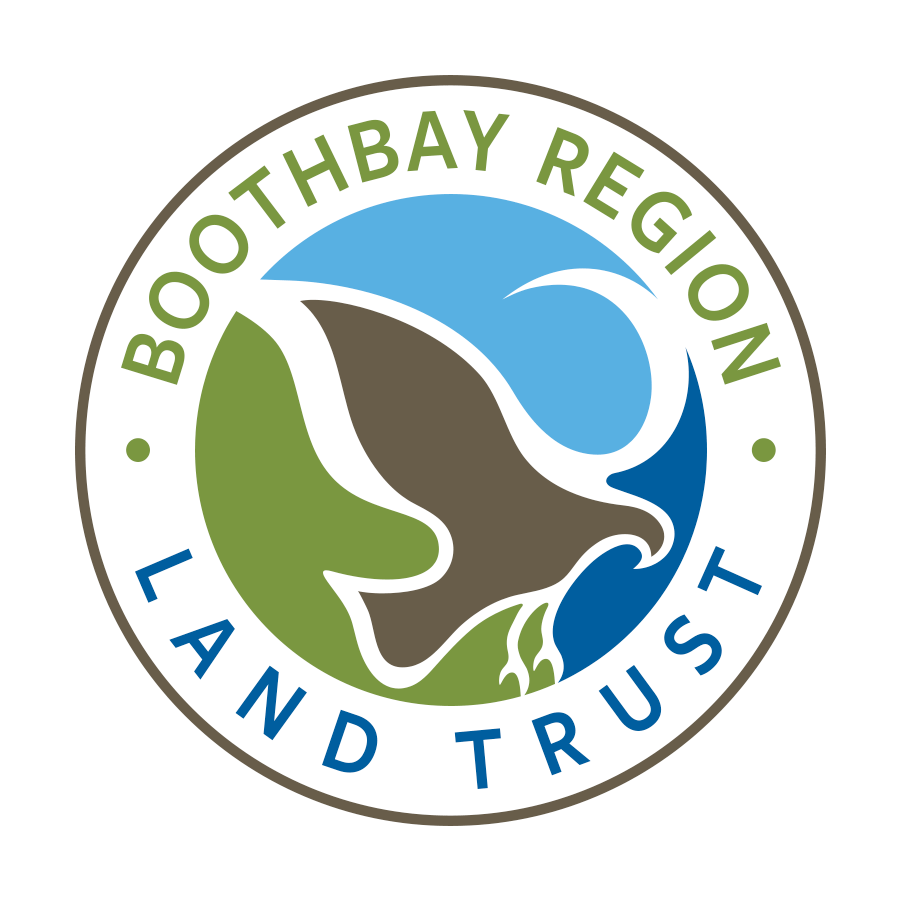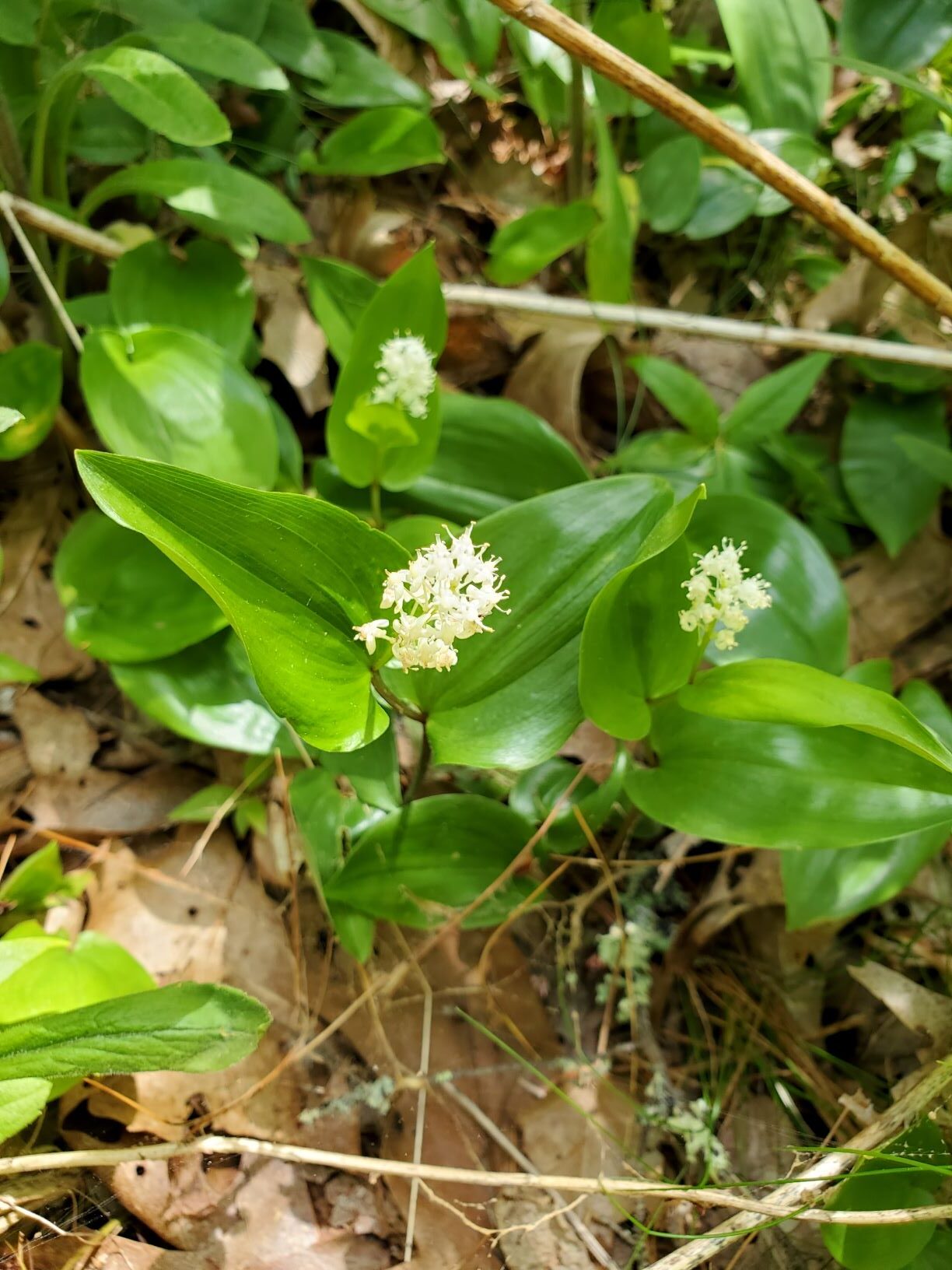May 19th 2021: The Canada Mayflower and Local Plant Identification

Canada Mayflower in Bloom
Now is the time to see the beautiful flower of a common plant that covers our local forest floors all summer long. On summer nature hikes I often receive inquiries about the identification of the shiny oval leaves that stay low to the ground. Canada Mayflower (Maianthemum trifolium) is a wildflower which produces frothy white flowers in late May and June in the mixed woods of our region. It is one of our spring ephemerals, wildlflowers that grow early before the trees fully leaf out to take advantage of the extra sunlight.
Canada Mayflower often forms carpet-like colonies as it spreads underground through its rhizomes, a type of modified stem. The short stem seen above ground usually zigzags and holds two oval leaves, and when in bloom the tiny white flowers are in upright clusters on separate delicate stems. The entire plant is only 3 to 6 inches tall. Plants with only one leaf are immature and will not flower until the second year.
The Latin name Mainanthemum comes from two Greek words: maios which means May and anthemom which means blossom. This year I have seen this wildflower blooming in May, but more often it is visible in June throughout our peninsula. The flowers can be fragrant if you can get down close to the ground to smell them. Later in the summer, the flowers become small berries with one to two seeds. The berries are initially green with spots, then turn a mottled dull red in late summer and red in fall.

Canada Mayflower Berries in Summer
Canada Mayflower is not a large source of food for wildlife but the berries and/or leaves are eaten by several bird and mammal species, including the Ruffed Grouse, Eastern Chipmunks, and Snowshoe Hares. It can be found on most BRLT preserves as it has rather flexible requirements for growth, finding success in a wide range of sunlight levels, soil types, and habitats. The range of Canada Mayflower extends from Canada south through the Appalachian Mountains of Tennessee.
If you are interested in learning more about the Canada Mayflower and the many other species of spring wildflowers that call our region home, consider joining us on June 11th at 9 AM at BRLT’s Oak Point Farm for a spring wildflower walk. Botanist and BRLT Board member Lauren Stockwell will help us identify some of our common wildflowers while observing the unique features of each plant. Group size is limited and registration is required by emailing or calling 633-4818.
If you are unable to join us for the wildflower walk, there are some great resources available for native plant identification. Our neighbors at the Coastal Maine Botanical Gardens offer a variety of native plant species for viewing and programs for learning. They also house an impressive herbarium with a collection of pressed specimens. The Wild Seed Project offers native plant profiles for Maine species as well as information on how to support local wildflowers. And as always, BRLT is happy to answer questions you may have about what you are seeing on the preserves. If possible, include photos with your questions.





